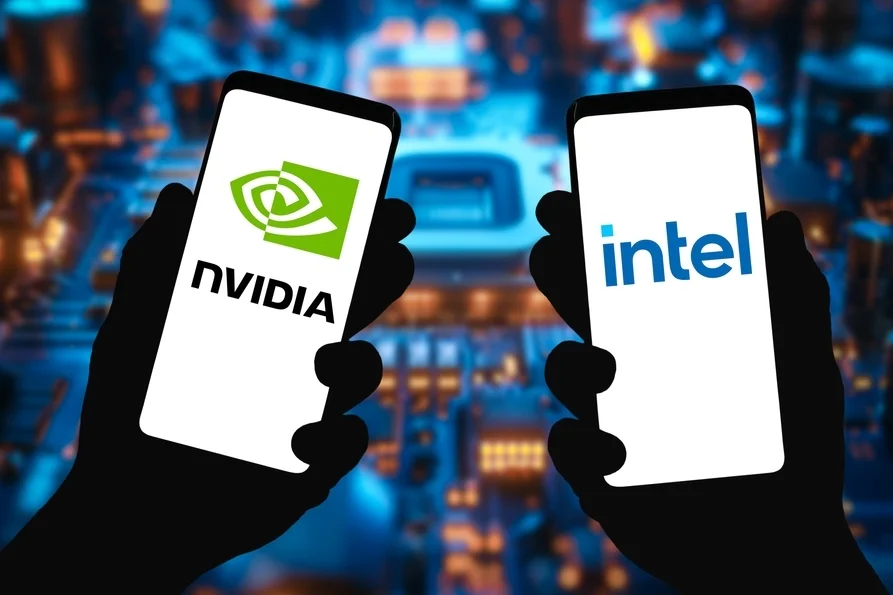
Syracuse, N.Y. – Micron Technology today reported record revenues just weeks before it plans to start construction on a massive chipmaking complex in the town of Clay.
Boosted by the demand for its memory chips for artificial intelligence and data centers, Micron had its best year since twin brothers launched the company in a Boise, Idaho dentist’s basement in 1978.
The company today reported revenues of $11.3 billion for its most recent fiscal quarter, a record. That beats the previous quarterly record of $9.3 billion, set in June.
For the fiscal year, Micron exceeded $37 billion in sales, a nearly 50% increase from 2024 and another record.
Micron is riding the crest of the artificial intelligence wave. The company’s high bandwidth memory chips are in such demand that mid-quarter, Micron announced it would bring in $500 million more this quarter than originally projected.
“In fiscal 2025, we achieved all-time highs across our data center business and are entering fiscal 2026 with strong momentum and our most competitive portfolio to date,” Micron Chief Executive Officer Sanjay Mehrotra said in a news release. “As the only U.S.-based memory manufacturer, Micron is uniquely positioned to capitalize on the AI opportunity ahead.”
The company projected today even higher earnings in the next quarter, as high as $12.8 billion.
Micron’s fiscal year runs from September to August.
Micron’s stock has soared by 75% since January. The broader NASDAQ 100 market has increased by 18% in that same time period.
The buoyant earnings report and surging stock prices are more good news for the Micron project in Clay, which has picked up momentum over the past several months.
In June, the Onondaga County Industrial Development Agency released a 20,000-page environmental impact report on the Micron project. The company is in the final stages of obtaining the first three permits it will need to start clearing the land in November. And Micron has hired one of the country’s largest construction firms, Gilbane Co., to start the estimated $1 billion job of clearing and leveling the site.
Micron earlier this month also filed its first detailed site plan showing what the complex would look like. The company even made a relatively small but highly visible move last week by installing a 320-square-foot, lighted sign atop one of downtown Syracuse’s tallest office buildings.
Micron announced in October 2022 it would spend up to $100 billion to build four fabrication plants, or fabs, in Clay. The company says it would employ up to 9,000 people and create 40,000 jobs from the growth that would spring up with the chip complex.
Micron could receive up to $25 billion in taxpayer subsidies, enough to pay for half of the first two fabs.
Micron, for now the only U.S. maker of memory chips crucial to artificial intelligence, cell phones and other technology on which modern life depends, has posted record sales in the past few quarters. It started producing high bandwidth chips early last year for Nvidia, the world’s most valuable company and the leader in the artificial intelligence race.
But the chipmaking business is as cyclical as it is cutthroat, and spectacular booms are often followed by equally spectacular busts.
In fiscal year 2022, for example, Micron posted the second-highest annual sales in company history, just over $30 billion. The next year, the company suffered a record loss and laid off 15% of its employees.
Micron’s surge is happening because it churns out DRAM memory chips, largely in its factories in Singapore, Taiwan and Japan. DRAM (pronounced D-ram) chips temporarily store data, a critical need when you’re doing an AI search or tapping in a phone number. Three-quarters of Micron’s revenues come from DRAM chips.
In June, Micron reported third-quarter revenues of $9.3 billion, its biggest quarter ever.
Micron has long been the feisty underdog in the global DRAM market. The company’s market share for DRAM has hovered around 20% for years, Handy said, with Samsung and SK hynix combining for about 70%.
DRAM chips are largely interchangeable between companies. So the competition is stiff to keep tweaking and fine-tuning the chips so they can store more data, use less power and create less heat.
To increase storage and speed, chipmakers like Micron stack those DRAM chips eight or 12 high to produce high bandwidth (HBM) chips. Data centers and artificial intelligence demand huge amounts of temporary data storage, so the company that can build a better high-bandwidth chip wins the race.
Micron says its brand-new HBM4 chip is 60% faster and uses 20% less power than the version released just a year ago.
Micron’s HBM revenues spiked by nearly 50% in the last quarter, Mehrotra said. The company’s HBM sales surpassed the $1 billion threshold for the first time in the second quarter, which ended in February.
Nvidia buys HBM chips from companies like Micron, then stacks those once again to build processing units. Each of those units, the red blood cells of artificial intelligence and data centers, is about 3 inches square.
The overall high bandwidth memory market is expected to explode from $4 billion last year to $71 billion in 2027, Bloomberg News said, citing Morgan Stanley.
Micron is also building two fabs at its corporate headquarters in Boise, Idaho. Total spending on the six fabs in New York and Idaho would exceed $150 billion over the next two decades, the company has said.



